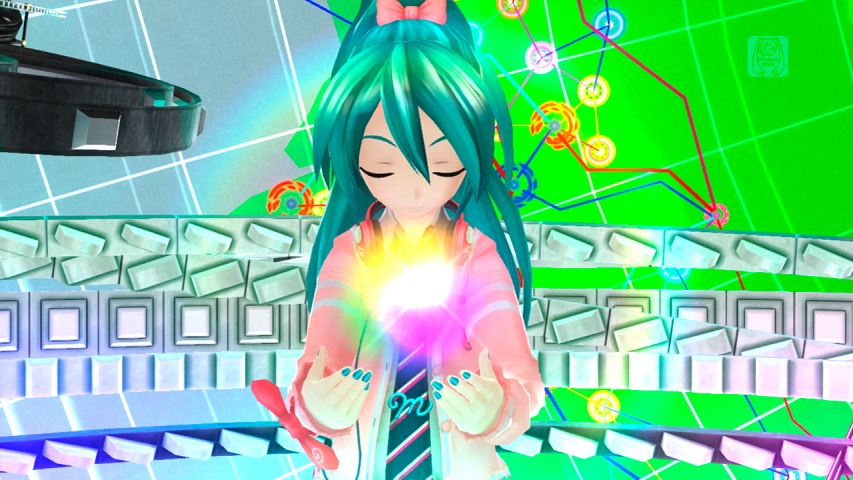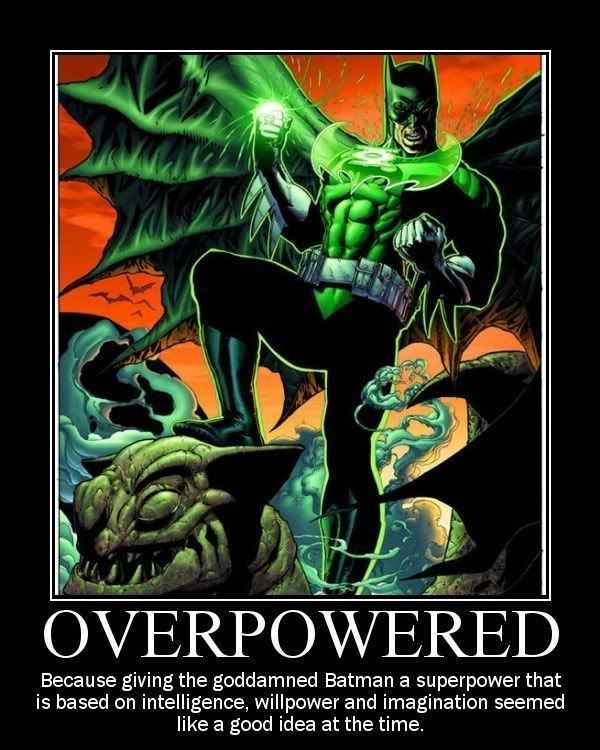|
      
掌握真理的先知
Glenn Seaborg
- UID
- 25672
- 主題
- 951
- 帖子
- 3288
- 精華
- 1
- DB
- 3972
- 魂
- 0
- 性別
- 男
- 櫻花
- 0
- 閱讀權限
- 70
- 註冊時間
- 2004-12-01
- 在線時間
- 0 小時
- 最後登錄
- 2013-11-27
- 帖子
- 3288
- 精華
- 1
- DB
- 3972
- 魂
- 0
- 註冊時間
- 2004-12-01
|
http://www.joystiq.com/2011/03/15/homefront-review/
![]()
Maybe I'm naive, but I honestly believe there was a point at which Homefront was destined to be something special. An FPS war game where the conflict was made intensely personal by staging it in America and waging it with real people? It's an arguably rock-solid concept.
The question then (and isn't the question always some variation on this?) is how did Kaos Studios and THQ go from that great germ of an idea to the brain-dead, dull and frankly pretty lousy final product they're releasing today?
In a story created by Hollywood screenwriter John Milius (Red Dawn), a reunited Korea has spread its influence throughout the world and, as of the year 2027, has begun occupying the United States. Step One of their occupation plan? Wreak havoc in strip malls and residential areas in an extremely specific way, so that the devastation left behind is incredibly linear video game levels. It's truly diabolical.
It's a tiny narrative ember in a big dark cave of missed opportunity.
One surly group of locals, tired of seeing their kids' elementary schools turned into choke points and cover spots, are taking a stand, nabbing some fuel trucks and bringing them to the U.S. military's resistance in San Francisco.
That mission (which occupies all but the game's last level) rarely plays out in a more interesting scenario than "clear the urban environment." You find some dudes, you shoot the dudes, you move on. Repeat for ... five or so hours. There's a variety of weapons, but none (save for the couple of shotguns) feel demonstrably different from the others, so no hope for excitement there. Nope, it's pretty much Dullsville top to bottom, save for the surprisingly excellent late-game helicopter stage.
There are monster closets. There are enemy wells. There are enemies that kill you with rocket launchers with no warning. Objectives are indicated by a compass and the word "Follow" that is ever-present over your squad leader (yes, through the whole game). There are so many lousy design choices, Homefront feels like a reunion tour for "Game Sins of the Mid 00s."
The hope then, with such pedestrian gameplay, is that the idea of everyday people battling in everyday American locations would be enough to buoy Homefront, but Kaos has undercut the impact of its own concept at nearly every opportunity.
The only thing I can figure is that the Koreans have turned the area outside San Francisco into some sort of Hooters/White Castle internment camp.
The characters couldn't be more stereotypical and their interactions couldn't be more cookie cutter. If they're average Joes protecting their homeland rather than super soldiers, they obviously haven't been informed about it; there's scarcely a moment of doubt, fear or real humanity to be found. There's a provocative moment involving a mass grave, but it's a tiny narrative ember in a big dark cave of missed opportunity.
Occasionally, when you notice you happen to be fighting on a Little League field or mall parking lot, you get a glimpse of Homefront's potential, but profoundly stupid in-game advertising is there to snatch it away just as quickly. The only thing I can figure is that the Koreans have turned the area outside San Francisco into some sort of Hooters/White Castle internment camp, so densely do they dot Homefront's retail landscape.
Still too immersive? Kaos has been kind enough to tattoo some of the game's most important locations with QR codes you can scan with your phone to get exclusive wallpapers and the like. Just, you know, while you're playing and being all immersed and stuff. There's no reason given. They're just there.
... I'm putting this sentence here on the off chance you're skimming. Go read the above paragraph, it tells you everything you need to know about the game.
![]()
If you get bored of tracking down QR codes, you can take a shot at the multiplayer, which is far more successful than the campaign. Though its modes aren't terribly interesting, it has spiced up the traditional formula in some interesting ways. Kills and completed objectives will earn battle points which you can use on the fly to spawn a better weapon or obtain jeeps, tanks and the like. The large scale battles with their shifting control points are reminiscent of MAG but with the added layer of controllable drones, tanks and copters.
Also, while kill streaks earn big, persistent bonuses, they also put a bounty and a large red marker on your head, which is a cool addition to the risk/reward formula. Those kill streaks differ depending on if you're on-foot or in a vehicle, another nugget of smart design.
It feels different from what's on offer from other games in the FPS market right now, but it's impossible to say whether or not that'll be enough to keep sustained interest in this crowded FPS market.
More puzzlingly, the pleasant multiplayer fails to capitalize on Homefront's citizen soldier premise in any way whatsoever.
As you'll notice in both the single and multiplayer modes of Homefront, you practically never interact with people who aren't directly involved in the war. Everyone's already fighting, only a couple sit on the sidelines to remind you what, precisely, you're fighting to defend. Kaos hasn't brought the war game into a context we can relate to, they've just turned the country into a war game.
As I slugged through my third Hooters, clearing a path to the nearby White Castle, I couldn't help but wonder: If, from the beginning, all the towns have been turned to video game levels and all the citizens to soldiers, why was I brought here in the first place?
![]()
![]()
![]()
![]()
![]()
![]()
![]()
![]()
![]()
![]()
轉自Joystiq
Homefront是一個故事背景相當之有趣的一個遊戲。故事設定在假想的未來, 北韓成功地統一朝鮮半島, 並吞併了亞洲各國成為強大國家。另一方, 美國因為受經濟衰退,天災,和疫病影響, 國力大大減退。終於在2027年, 北韓對美國展開了侵略, 並成功地控制了大部份的國土。玩家扮演的游擊份子將會和北韓軍隊展開家園保衛戰, 並從他們手上解放美國。此為遊戲裏重要事件發生的年表(虛搆的):
* 2011: North Korea faces another UN sanction over its latest nuclear test.
* 2012: Kim Jong-Il dies and is succeeded by his son Kim Jong-un.
* 2013: Kim Jong-un is awarded the Nobel Peace Prize and featured on the cover of Time Magazine for his accomplishment of Korean reunification.
* 2014: American military withdraws from the Korean Peninsula. General Motors declares bankruptcy for the second time.
* 2015: The effects of peak oil are felt as gas prices reach up to 20 dollars a gallon due to a war between Iran and Saudi Arabia. Russia cuts off all oil trade with Europe. Survivalist literature become bestsellers in America. China's influences diminish.
* 2016: America withdraws its military from Japan and other countries overseas, focusing on its instability back home. Texas splits from the United States, border bloodshed takes place as refugees from other states attempt to enter Texas.
* 2017: Martial law is declared in the United States as its infrastructure crumbles due to financial deficiencies.
* 2018: After the destruction of one of its nuclear facilities by Korean special forces, Japan surrenders to the Greater Korean Republic and is capitalized into a vassal state.
* 2019: The UN goes out of commission.
* 2020: Canada closes its borders to Americans. The US military takes over the functions of many emergency services, as well as the distribution of basic goods. This causes many Americans to abandon the suburbs in exchange of the military-managed urban centers.
* 2021: Korean forces succeed in annexing many countries in Southeast Asia. A new pandemic known as the Knoxville Cough, type of bird flu, begins to spread in the United States.
* 2022: To prevent the contagion of the Knoxville Cough, Mexico closes its borders to Americans. Hyperinflation pushes the US dollar to the edge of collapse.
* 2023: The Knoxville Cough ravages the American public. The Korean People's Army reaches 20 million total personnel.
* 2024: Using the captured M-V rockets at the Uchinoura Space Center, Kim Jong-un announces a new space satellite program, under the pretense of replacing the decaying GPS system, which America could no longer afford to maintain.
* 2025: A thermonuclear device is detonated by one of the Korean satellites 300 miles above Kansas, blanketing America with an EMP that wipes out its power grid and most of the electronics above ground. The US infrastructure is virtually in ruins. This is followed by the Korean seizure of Hawaii and landings in San Francisco. Korean paratroopers are dropped into central United States. The economic downfall in Europe prevents its nations from intervening.
* 2026: The United States is split into two as the KPA irradiate the entire Mississippi River, as a fortification for their control of the western side.
* 2027: The United States Armed Forces are completely scattered.
值得一提的是此遊戲因為題材敏感的關係在南韓是全面禁售的(北韓那邊應該會把這個當做聖經)。而日本版將所有有關"北韓","金正日"的文句都改成了"某個國家","某位領袖"(相信是怕北韓那邊送他幾枚導彈)。據開發人員指原本的反派是天朝不過後來改了北韓(相信是怕了天朝神威)。沖着故事的話這遊戲應該值得一試。
(謝謝chiek大大糾正!)
[ 本帖最後由 shinta1412 於 2011-03-17 10:00 編輯 ] |
|




